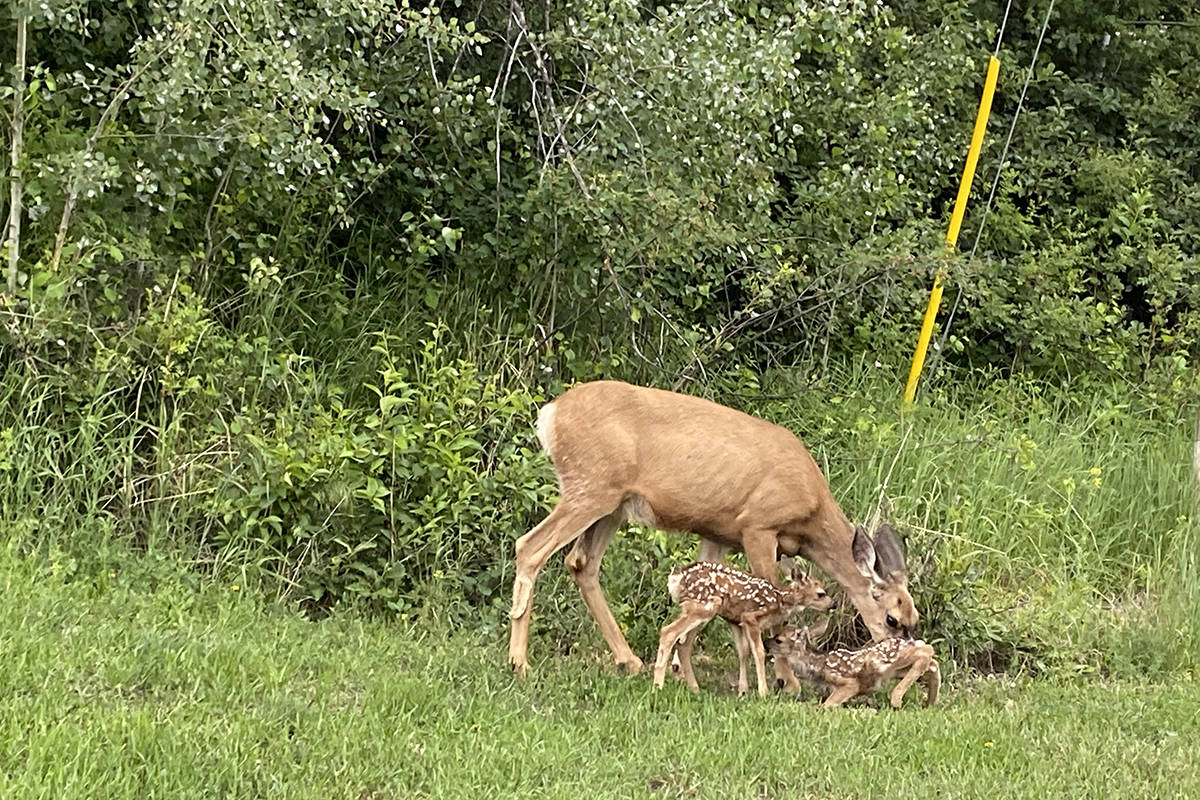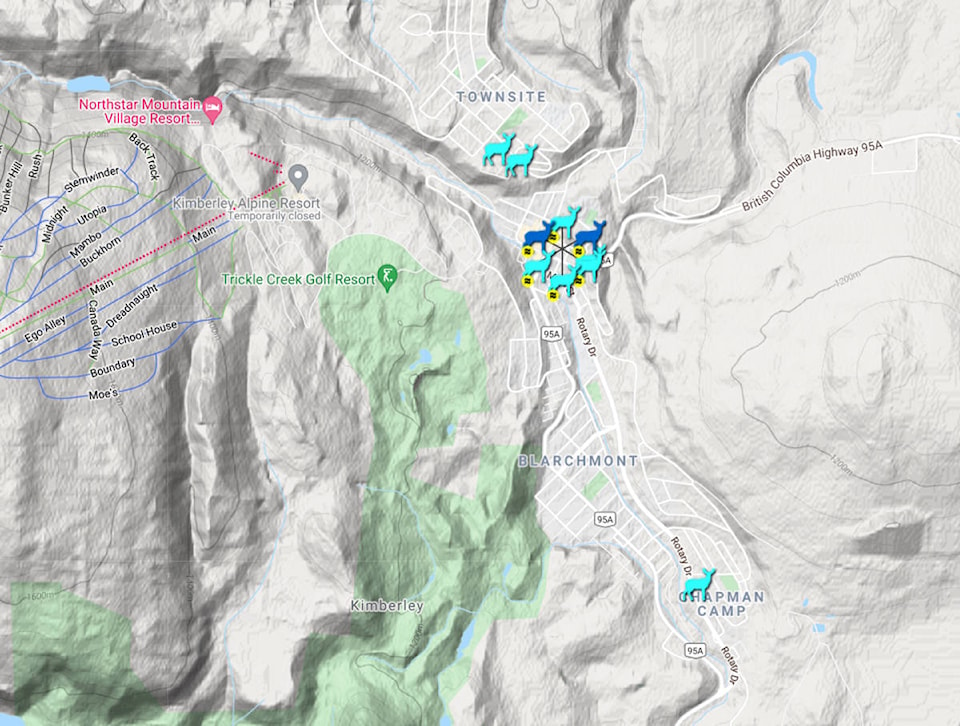After numerous posts on social media about aggressive deer attacks in Kimberley and Cranbrook over the past few weeks, The Convervation Officer Service and WildSafeBC have sent out a reminder that it is still fawning season, and that 99 per cent of these attacks involve dogs.
“Nobody is blaming the dogs or the people who are walking their dogs, just know that the common denominator of aggressive doe attacks is dogs,” said WildSafeBC Community Coordinator Danica Roussy. “This occurs all around the province, not just Kimberley.”
Since Kimberley resident Liz Royer was hospitalized after a deer attacked her while walking her dog, there have been more and more people sharing their own experiences on social media.
READ MORE: Kimberley woman in hospital after deer attack while out for dog walk
On June 15, Alan Price posted on social media that he was walking his dog along the trail towards McDougal Park in the Townsite area of Kimberley when a doe kicked him, knocking him down to the pavement. Fortunately, two other young men who saw it happen came running to his aid and were able to chase the deer away and Price was unhurt.
When asked if this high volume of attacks shared on social media reflect an increased population of deer, Roussy said that deer numbers are indeed up, as there have been no culls for the past two years.
“Unfortunately people don’t like deer attacks but then there are some who destroy traps,” she said.
READ MORE: Trap vandalism impacting urban deer cull: city report
READ MORE: Deer suffered in fatal Cranbrook cull trap, animal protection group says
She added that what what can happen when someone is attacked so early in the season is that the community may think that every deer is aggressive, when in fact she said there are only about five deer in town that are known to be at this time.
Mayor Don McCormick, aware of the high volume of concern surrounding this issue, took to social media and shared the perspective of the city.
“The City of Kimberley has no authority to deal with wildlife within the City,” McCormick said.
“The Province defines which tools are available, and Provincial employees (conservation officers) are called to deal with problem animals – deer, bears, or other. The tools available are very limited at this point, including translocation (due the emergence of Chronic Wasting Disease). The City continues to work with the Province on wildlife management practices.”
READ MORE: The 2020 Kimberley urban deer count
WildSafeBC reminds people to avoid areas that have Deer in Area signs posted, and to try and take other routes if possible, especially if you are out with your dog.
If you’re in an area that doesn’t have a sign and you happen upon a fawn, be aware that you may have just come between mother and baby.
“It is important for pet owners to keep dogs on leash during this time,” Roussy said. “Does may see pets as predators or threats to their newborns since dogs are members of the canid family and are the natural predators of fawns in the wild. If a dog comes too close, the doe may become aggressive and try to attack the dog.
“If a doe comes towards you and your dog – drop the leash immediately. The dog will most likely get away, seek shelter, and save itself.”
Does will often leave their young alone for hours while feeding, returning periodically to nurse. The scentless, silent fawns may appear to have been abandoned, but you must leave it be, as removing it from their bedding area would drastically reduce its chance of survival, plus it is illegal under the Wildlife Act to pick up any wildlife.
If you do see a fawn or any other young animal that you’re confident has been abandoned, contact the BC Conservation Officer Service (COS) at 1-877-952-7277.
It’s also important to never feed deer or other wildlife, as there are a number of risks and problems that can arise from doing so.
WildSafeBC said that the COS is actively working on a management plan to address the aggressive does, however they likely will not take any action until fawning season is over and the young animals are capable of surviving on their own.
In the meantime, there are a few main locations to be especially cautious of aggressive deer in, and are shown on the map from WildSafeBC, provided below. The locations include Townsite near 4th, Garden View — the trail that goes from Townsite down to the Platzl, Chapman Camp and the area around City Hall.
Roussy said that the callers on the latter did not provide an accurate location, but they are within 100 metres of Rotary Drive.
paul.rodgers@kimberleybulletin
Like us on Facebook and follow us on Twitter

